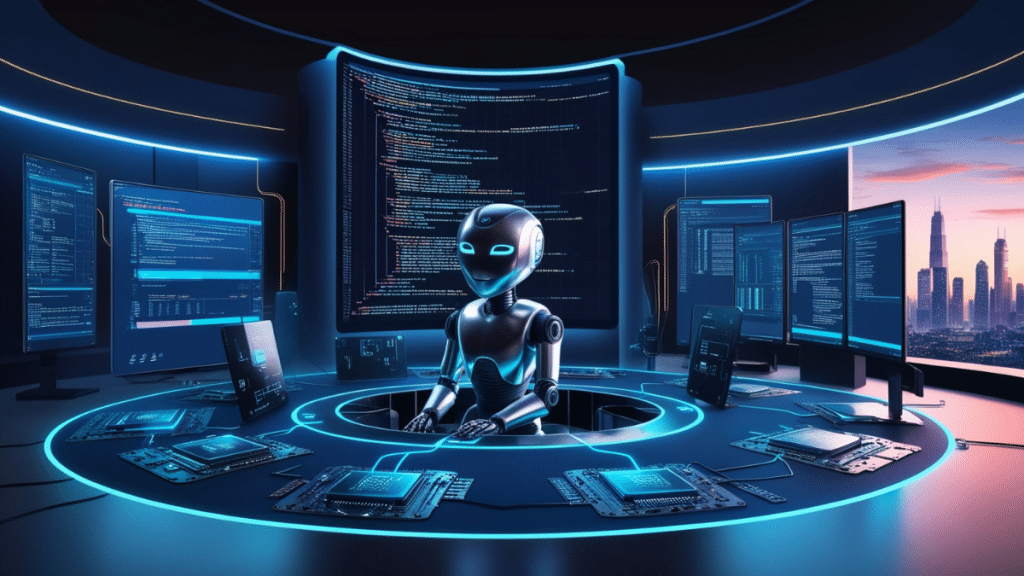AI tools in software development are no longer just experimental novelties — they’re becoming real accelerators. But speed alone doesn’t guarantee success. In fact, without the right structure, it can create more chaos than clarity.
This is the story of how we used AI to hit an unmovable deadline on a complex software migration — and what we learned about velocity, risk, and balance along the way.
The Challenge: Outdated System, Unrealistic Timeline
The project began with a massive legacy platform — a mission-critical web application used daily by thousands. It was built on aging tech, full of security issues, and deeply customized across clients. Migration wasn’t optional — the technical debt was growing fast.
Initial engineering estimates put the migration effort at 18 months. But leadership unexpectedly cut the timeline to 12 months, with no room for discussion.
We were a small, mixed team: four engineers from Kaizen, two vendor developers, and the client’s product team. From day one, it was obvious — we didn’t have enough time.
Under Pressure: No Easy Outs
Progress was steady, but the math didn’t lie. The scope was too big for the resources available. As the weeks went by, it became increasingly clear: we were heading toward a deadline we couldn’t meet.
Making things harder, the client’s organization was highly hierarchical. Upper management was disconnected from the technical realities. Suggestions like trimming scope or growing the team were blocked before they could gain traction.
So, we started looking elsewhere for leverage.
The AI Shift: From Curiosity to Strategic Bet
Around that time, AI code generation tools like Windsurf (a VS Code fork powered by an autonomous agent named Cascade) were picking up steam. We’d been quietly testing these tools in our Innovation Hub — a small, cross-project team at Kaizen exploring emerging tech.
The tools showed promise, but convincing the client to try them was another matter.
Security concerns were front and center. Understandably, they were worried about exposing their code or data to external models. So we proposed a compromise: a controlled experiment using a locally hosted, internal model — essentially a “KaizenGPT.” No cloud, no data leaving the perimeter. Slower, but safe.
After a few successful test runs (with synthetic data), we built enough trust to try something more ambitious: enterprise-grade AI models with paid licenses and security guarantees. These gave us the speed we needed, without compromising on compliance or privacy.
The AI Sprint: Speed, with Eyes Wide Open
Once we had buy-in, the client gave us one clear directive:
“Two weeks. No meetings. Skip the formalities. Just code. Push AI to the limit.”
We knew this approach wasn’t sustainable. It meant sacrificing process and structure — things we normally see as non-negotiable. But at that point, the biggest threat to the project was time. So, we agreed to the sprint, fully aware of the trade-offs.
It worked — to an extent. We moved incredibly fast. AI helped us cut through boilerplate, generate patterns, and experiment rapidly. But the downside was immediate: inconsistent standards, diverging practices, and a rise in tech debt that we’d need to clean up later.
It wasn’t that AI made the project messy — the context did. We were chasing pure speed, and that came at a price.
The Aftermath: Lessons and Realignment
The goal was never to keep that pace forever. Once the sprint ended, we hit pause and evaluated: what worked, what didn’t, and how we could bring AI into our workflow without the chaos.
That’s where the real value began.
We created internal standards for AI usage, clarified what tasks it was well-suited for, and where human judgment was still essential. We learned how to blend AI-assisted development into a sustainable process — one that supported both speed and quality.
Final Thoughts
AI didn’t save this project on its own — but it gave us a crucial edge when we needed it most. Used wisely, it’s a powerful tool for accelerating delivery. Used recklessly, it’s a fast path to more problems.
The real lesson? AI doesn’t replace good processes — it amplifies whatever system you already have. If your structure is sound, AI can take you further. If it’s fragile, AI just cracks it faster.


